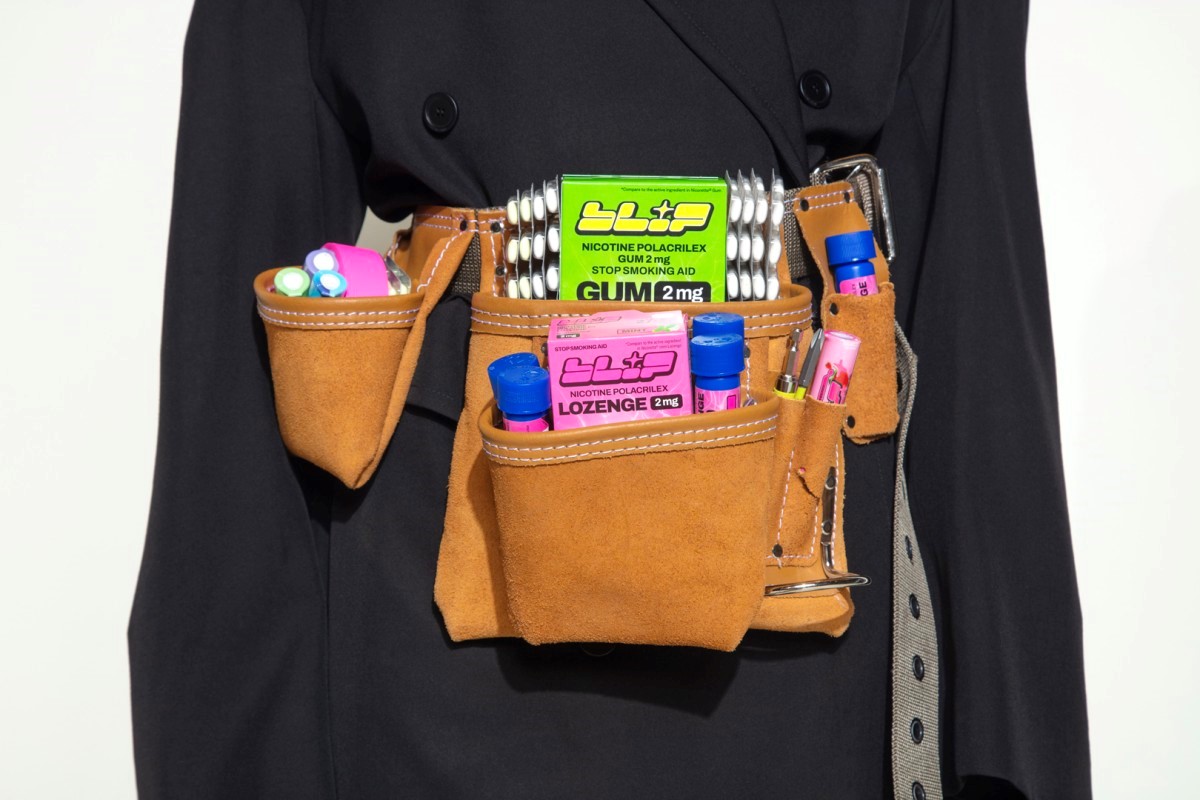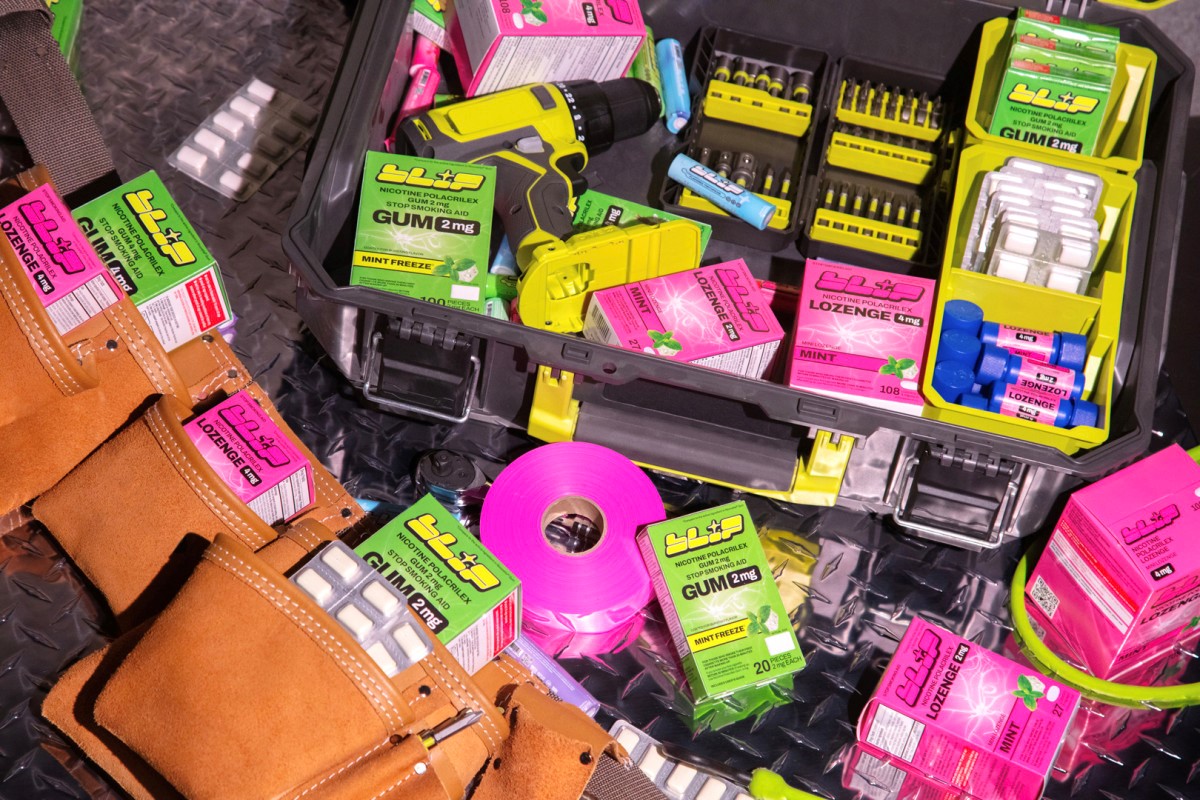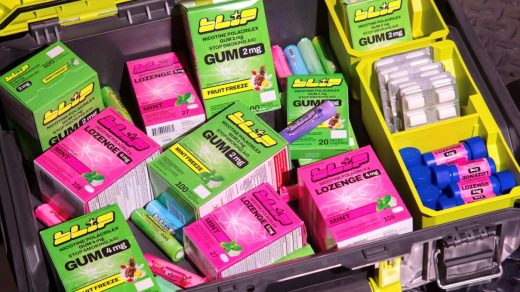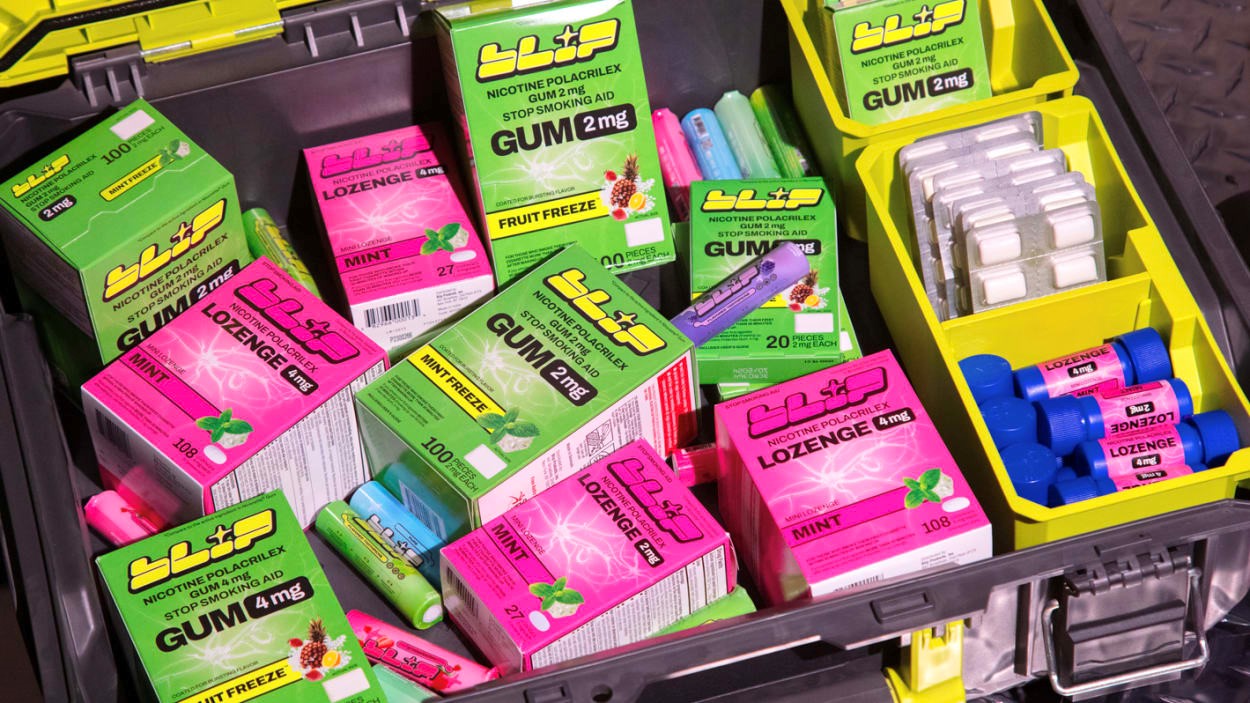Juul got young people addicted to nicotine—this startup wants to help them quit
There’s a direct-to-consumer strategy that follows a familiar game plan: Take a medical-grade product for a common problem that’s gone off-patent or recently approved by the Food & Drug Administration for over-the-counter use, market it to a targeted segment, make bank. Think of Hims (finasteride for hair loss; sildenafil for erectile dysfunction), Cove (triptans for migraines), Rory (bimatoprost for eyelash growth), the upcoming Opill (norgestrel for birth control), and so many others.
Launching today, the smoking-cessation company Blip takes a similar approach, albeit with FDA-approved nicotine replacement therapies (NRTs) that became available over the counter in 1996. Blip delivers its NRTs not only to consumers online but also via select CVS stores across the country. The retro-packaged gum and lozenges are being marketed to a generation that’s never encountered the Marlboro Man and Joe Camel, but that got hooked on nicotine anyway thanks to candy-flavored Juuls.

“There are 30 million Americans that are smokers or vapers, and more than 50% of them are young adults,” says Blip president and cofounder Alyson Lord, a beauty industry veteran who previously oversaw brand partnerships for Ipsy and who is also a former smoker. “Quitting is hard, and just because a product exists, doesn’t mean that people consider it.”
She says she tried to quit 10 or 15 times across 17 years—and eventually kicked the habit last year—but never once thought to purchase Nicorette. That is, until she was approached by serial entrepreneurs Brian Bordainick and Julie Schott about overseeing a new smoking cessation company that they were founding. The pair are behind the acne-patch brand Starface, a Gen Z favorite; Plus, a waterless body wash that comes in dissolvable packaging; and Julie, an emergency contraception.

The idea for Blip came during a Starface photo shoot with model-creator Josephine Lee (aka Princess Gollum), who was an avid vaper seeking to quit. According to company lore, Lee asked Schott if she could do for the nicotine patch what she’d done with the Starface patch. She and Bordainick did a little research and realized no one else was creating a Nicorette dupe that would appeal to young smokers and vapers by growing a community of quitters and their peers. “We wanted to create something that was cool, that people will love, and start a conversation people have ignored,” explains Bordainick.
In April 2022, they recruited Lord and assembled a founding team that also includes Mark Rubinstein, an MD and leading teen addiction researcher who now serves as medical director for Blip. He understands the company’s target demographic well: From 2019 to 2022, he was at vape giant Juul, researching underage usage and ways to reduce teen vaping as the VP of scientific and clinical strategy. Before that, he was a professor and researcher at the University of California, San Francisco, primarily studying teen smoking cessation.
The team dreamed of creating a brand that young people would view not only as medicine but an entry point for community. “The FDA requires us to put all the drug information on the box, but quitting smoking and vaping is way more than just the facts and instructions,” says Lord. “It requires community and support systems and a voice. We’ve combined all these to give young people an approachable way to succeed at quitting.”
Where other NRTs are sold as a tool for when you’ve messed up, Blip’s founders decided their product should be fun—helping to destigmatize talk about addiction and failure. “The form factor isn’t necessarily the issue. It’s the understanding of what the product is and creating a connection to it,” Bordainick says. “We wanted to turn NRTs into a brand whose logo [a user would] rock on a T-shirt, because we believe, ultimately, that’s how problems get solved.”

Blip’s packaging, which appears on its lozenges, gum, and flavored toothpicks (which Lord credits with helping her quit), is designed to appeal to people between the ages of 18 to 35. The bold 1980s arcade vibe—the Stranger Things aesthetic applied to smoking cessation—is meant to stand out on a shelf of medicinal-looking Nicorette boxes.
There is no timeline for quitting, so Blip created a QR code that quickly takes users to blip.world, where they can find information on how to access and join the company’s community of fellow quitters. And to really hit home that quitting can be fun and communal, taglines are cheeky: “No ifs, ands, or butts” reads one. “Die Another Way” says another. “Blip gets you off” is their main tagline, for now.
“We were pretty proud to get that [tagline] passed through CVS,” Lord says, of the brand’s retail launch partner.
Blip will be available to wannabe quitters online through the brand’s own website, but Bordainick admits that the direct-to-consumer approach has become increasingly costly. “You can’t play the online customer acquisition game and win it anymore,” he says. “So, we have a different thesis: By producing content that is engaging and not cheesy or boring, the young adults in your life might share it on a group text.”
Lee (@PrincessGollum on Instagram) and Rubinstein (AskDr.Mark on TikTok) will be the faces of the brand, delivering snackable and hopefully viral videos. The content aims to reframe the conversation, Lord says, and normalize the behaviors that go along with quitting. “It can be funny and tragic and everything in between, instead of just before-after testimonials,” she says. “At times quitters are jerks. If you’re the partner, you can find someone in the community who might say, ‘My boyfriend was a jerk, too, let me send you this article.’ That provides a voice [that speaks] to your experience.” The content, she adds, will act as a Trojan Horse, sneaking the notion of quitting into engaging snippets.
The team isn’t leaving success up to an algorithm, however. They’re also opting for some old-school avenues to find quit-curious young smokers. “We’re not doing huge national campaigns to start, because we aren’t everywhere yet, but we’re engaging iHeartRadio for targeted ads in podcasts, as well as testing out paid local news segments,” says Lord.
In the end, Blip’s founders don’t want young people feel alone on their journey to being vape-free. “Quitting sucks,” says Lord. “We are here to help it suck a little less.”
(18)



